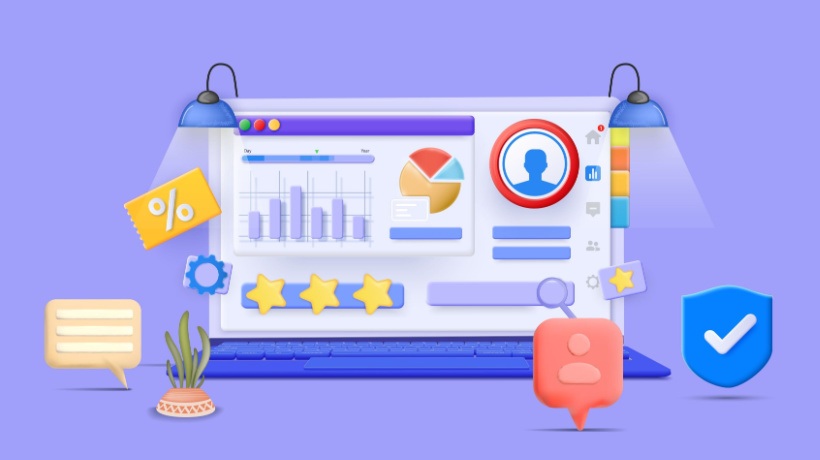Analyzing Your Lesson To Discover More With Learning Analytics
Personalized Learning is a key global educational challenge. At its core lies the need for accurate and meaningful student profiles. However, the effort needed by teachers to manually populate and update accurate student profiles is, usually, restrictive. To remedy for this barrier, specific Analytics technologies have been proposed, including Learning Analytics.
Personalized Learning In 21st Century School Education
One of the key challenges for 21st century school education is how to deliver Personalized Learning to individual students. Personalized Learning has been supported by empirical evidence on the benefits it can deliver for students in terms of educational performance and engagement, for example the Promising Evidence On Personalized Learning report and the Positive Power Of Personalized Learning report.
As these (and other) reports suggest, a core element of Personalized Learning is the collection and analysis of appropriate student data stored in student profiles.
Student Profiles
A student profile is a set of attributes and their values which can describe the student. The types of student data commonly used in student profiles can be classified as follows:
- Static Student Data, which refer to personal and academic attributes of students that may remain unchanged for large periods of time. Examples of static student data include:
- Student demographics, such as age, special education needs or nationality.
- Past academic performance, such as prior course enrollments and transcripts.
- Dynamic Student Data, which refer to students’ activities during the learning process and are generated in a more frequent rate. Examples of dynamic student data include:
- Student engagement in the learning activities, such as level of participation in the learning activities or level of usage of educational resources and tools.
- Student behavior during the learning activities, such as disciplinary incidents and absenteeism rates.
- Student performance, such as formative and summative assessment scores.
However, a common barrier in effectively using student profiles to inform personalized learning is that building and maintaining informative and accurate student profiles is a demanding task, especially using paper-and-pencil instruments.
To address this need, Analytics technologies have been proposed, including Learning Analytics.
Learning Analytics
Learning Analytics has been defined as “the measurement, collection, analysis and reporting of data about learners and their contexts, for purposes of understanding and optimizing learning and the environments in which it occurs”. This is related with Teaching Analytics, which provides the means to analyse the learning context, namely the teaching design.
Learning Analytics can provide the methods and tools to:
- Collect student data during the delivery of a lesson in order to update individual student profiles. The types of student data typically used belong to the ‘Dynamic Student Data’ category discussed previously and may include (a) Engagement in learning activities, (b) Performance in assessment activities, (c) Interaction with Digital Educational Resources and Tools and/or (d) Behavioral data.
- Analyze and report on student data to facilitate the teacher decide on personalized interventions (e.g., feedback and scaffolding). To do that, Learning Analytics utilize both ‘Dynamic Student Data’ as well as ‘Static Student Data’.
Learning Analytics provide different types of outcomes, as depicted in the following table:
| Learning Analytics Outcome | Description |
| Discover Patterns within student data | Helps teachers provide more informed support and scaffolding to individual students and conduct more holistic assessments |
| Predict Future Trends in students’ progress | Elicits how the students might perform in the future, for example in terms of performance or engagement, and plan appropriate support |
| Recommend Teaching an Learning Actions | Recommendations may refer to educational resources/tools or learning/ assessment activities that are appropriate to meet the individual needs of students. The recommendations may be addressed to either teachers or students. |
Learning Analytics Strands
As this article published in Hobsons outlines, Learning Analytics can be classified in three main strands, which exploit the same student data types, however aim to achieve different outcomes:
1. Descriptive Analytics.
It typically aims to analyze student data and create dashboards that depict meaningful patterns or insights emerging from these analyses. In this sense it presents “What has already happened” and it is related to the “Discover Patterns within student data” outcome discussed previously. Examples of Descriptive Learning Analytics tools include SmartKlass and the Learning Analytics Enhanced Rubric, which are plugins for the Moodle Learning Management System.
2. Predictive Analytics.
It typically aims to predict future trends in student progress and is commonly used to identify students who might become "at-risk" in terms of low performance or low engagement. In this sense it presents “What will happen” and it is related to the “Predict Future Trends in students’ progress” outcome discussed previously. Examples of Predictive Learning Analytics tools include the Early Warning System, which is a plugin for the BrightBytes Clarity Learning Management System, and the Engagement Analytics tool, which is a plugin for the Moodle Learning Management System.
3. Prescriptive Analytics.
It typically aims to generate recommendations for further teaching and learning actions, e.g., suggest alternative educational resources or tools. In this sense it presents “What should we do” and it is related to the “Recommend Teaching and Learning Actions” outcome discussed previously. Examples of Prescriptive Learning Analytics tool include the LearnSmart tool, developed by McGraw-Hill Education, and the Adaptive Quiz tool, which is a plugin for the Moodle Learning Management System.
Conclusion
Learning Analytics can support the classroom teachers to provide personalized support to students, by measuring, collecting, processing and reporting on various types of educational data in order to visualize what has already happened, "predicting" what might happen and/or proposing actions to take in response.
If you are interested to learn more, you can join me and a large community of innovative teachers from around the globe to Curtin's new edX MOOC on Analytics For The Classroom Teacher.








